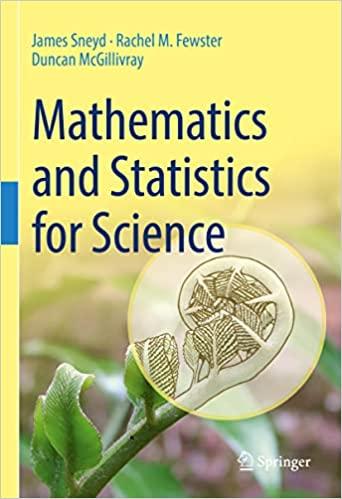An apple-grower applies a treatment to his fruit to reduce a disorder called scald, which blights the
Question:
An apple-grower applies a treatment to his fruit to reduce a disorder called scald, which blights the apple skin with unpleasantlooking spots. If an apple in his orchard is treated, it develops scald with probability 1/5. If it is not treated, it develops scald with probability 3/5. Assume all apples are independent.
On one occasion, the grower’s treatment process breaks down and some of his apples fail to be treated. Assume that an apple is successfully treated with probability p, independently of all other apples, where 0 < p < 1. We want to estimate p, but we can’t observe the treatment outcome directly. Instead, we have to work indirectly by observing how many apples go on to develop scald.
a. Let X be the number of apples that develop scald, out of a batch of n apples. By defining a suitable sample space and events, and formulating appropriate probability statements, specify the distribution of X in terms of the unknown parameter p. Hence show that the likelihood function for estimating p can be written as, L(p ; x) = K(3 − 2p)
x
(1 + p)
n−x for 0 < p < 1, where K is a constant that you should specify, but not calculate.
b. By differentiating the likelihood, show that the maximum likelihood estimator for p is pb=
3n − 5X 2n
.
You may assume that the likelihood reaches a unique maximum in the range 0 < p < 1, and that there is negligible probability that the estimator 3n−5X 2n lies outside this range.
c. Rather than differentiating the likelihood as in part (b), can you think of a simpler way of finding pb? You may use the general knowledge that if Y ∼ Binomial(n, q) then qb= Y/n. Carry out the alternative computation, and verify it gives the same estimator as in part (b).
d. Find the MLE of p when there are 200 apples, of which 94 have scald. Hence also give an estimate of the number of apples in the batch of 200 that failed to be treated.
Step by Step Answer:

Mathematics And Statistics For Science
ISBN: 9783031053177
1st Edition
Authors: James Sneyd, Rachel M. Fewster, Duncan McGillivray






